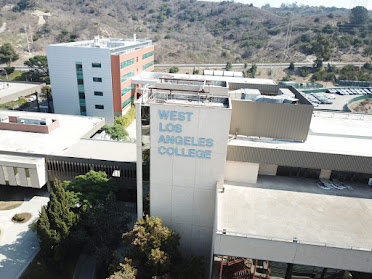- Get link
- X
- Other Apps
By now, you may have surmised that I'm a history buff. I enjoy knowing the "why and how" of events and persons that preceded us. I'm particularly interested in local history and how the communities we work in and the organizations we support came to be.
With that in mind, and in building on my previous entry, I want to share a story that is particularly relevant to us today as we face the unprecedented challenge of literally resurrecting our College and again opening our doors to students, faculty, staff, and community, after the horrors of the pandemic.
In 1984, the country was still recovering from a three-year recession prompted by the 1979 energy crisis. In California, a direct impact on West Los Angeles College was the elimination of free community college and, as a result, enrollment began to drop precipitously. By 1986 WLAC had lost 44% of its enrollment.
Concurrently, the Los Angeles Community College District was facing an $8-$10 million deficit and West, as one of the last colleges to open—and with incomplete construction projects and plummeting enrollment—was at the center of the discussion as to whether or not it was still cost-effective to have nine colleges in the District. Serious discussions were held about closing West.
In response, Dr. Jack Fujimoto, the president at the time, was removed from office and an interim president, Linda Thor, was appointed. On her first official day as president--March 3, 1986, 35 years ago this month--she informed the entire West community that she had received a mandate: grow by 20% by the fall semester (within the next six months) or risk closure of the school.
In August 1986 enrollment did not increase by 20%--it was up 36%. Dr. Thor recalls that "When the first day of classes came that fall, we were all cheering--we had traffic jams in the parking lots!" By 1988 West posted the highest enrollment increase in the District. She credits the turnaround to "a whirlwind of activity and a great deal of teamwork."
The relevance of this short excursion into local history should be painfully obvious. In 1986, as the result of a global recession, West was facing enrollment declines and a budget shortfall and had multiple construction projects in process. In 2021, we face the aftermath of a global catastrophe, we have declining enrollments (after five years of consistent increases), and we have multiple construction projects about to begin.
We clearly have a record of success in facing significant obstacles. The secret? Working together, holding honest conversations, and pitching in to help stabilize and move the college forward while we focus on our most important goal--ensuring our student's academic success.
So if you are asked to make phone calls to students, or to be available for an online chat, or to participate in a "support pod" to give students the level of encouragement that they need to return to school, please freely give of your time. I can literally say that the future of West depends on each of you and all of us working together in pursuit of our shared mission.
(The story about the 1986 crisis is documented in the definitive history of West Los Angeles College published by the Foundation to commemorate the College's 45th anniversary: "West Los Angeles College: 1960s through 2010s.")
- Get link
- X
- Other Apps
